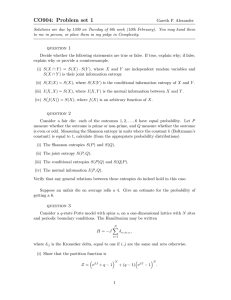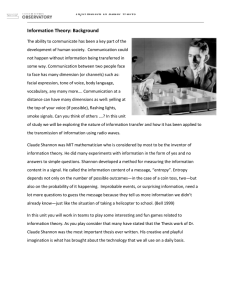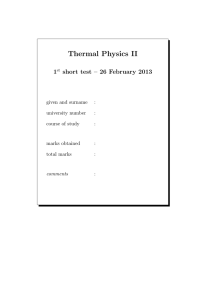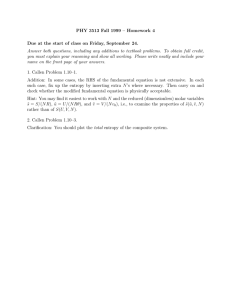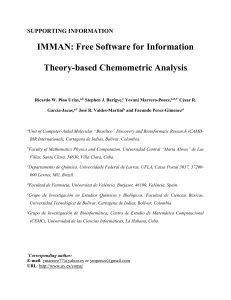Document 10907929
advertisement
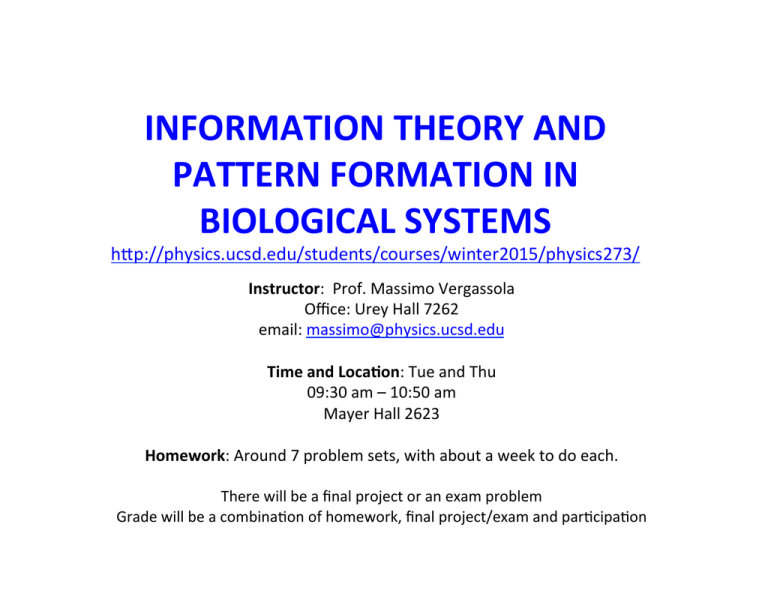
INFORMATION THEORY AND PATTERN FORMATION IN BIOLOGICAL SYSTEMS h#p://physics.ucsd.edu/students/courses/winter2015/physics273/ Instructor: Prof. Massimo Vergassola Office: Urey Hall 7262 email: massimo@physics.ucsd.edu Time and Loca@on: Tue and Thu 09:30 am – 10:50 am Mayer Hall 2623 Homework: Around 7 problem sets, with about a week to do each. There will be a final project or an exam problem Grade will be a combinaSon of homework, final project/exam and parScipaSon Historical perspec@ve Messages and informaSon have been transmi#ed for a long while… Morse ≈1840 Telegraph lines ≈1891 “The fundamental problem of communicaSon is that of reproducing at one point, either exactly or approximately, a message selected at another point.” Bio-­‐ informaScs Black holes Molecular biology and codes EvoluSon Quantum compuSng Inference and learning StaSsScal Physics Cryptography Neurobiology CommunicaSon and electrical engineering Poraolio management IntroducSon to informaSon theory • DefiniSons, examples and discussion of basic quanSSes: Shannon, joint, condiSonal and relaSve entropies; mutual informaSon • H = − ∑ p i log p i and Shannon’s grouping property • Bits Cover & Thomas, Elements of InformaSon Theory InformaSon transmission in Large Monopolar Cells of the blowfly visual system (Laughlin) PredicSon yielded by Max I(contrast input signal, firing rate output signal) Kelly’s horse races, proporSonal benng and bacterial growth W+H=constant W=wealth expected growth H=entropy of esSmated outcomes Data Processing Inequality and ApplicaSons to BioinformaScs X Y Z I(X, Z ) ≤ I(X,Y ) No miracles: if you process data, e.g. Z=f(Y) you cannot create extra informaSon even though you might illustrate it much more clearly Entropy of spike trains and expression profiles Specific points we shall cover along the way • AsymptoSc EquiparSSon Property and source coding theorem • Joint typicality • Measuring entropies from real data • Entropy rates and Markov processes • Length of messages and entropy. Compression codes? • Water-­‐filling soluSon and opSmal frequency responses • Fisher informaSon and inference Shannon’s channel theorem Transmission with no error in the presence of noise! Rate ≤ Channel Capacity expected reduction in entropy of the posterior probability field. ExploiSng informaSon to perform funcSons Infotaxis Infomax and ICA Figure 1 | Typical infotactic trajectories. a, Without wind; b, with wind. Simulations are performed for a model of odour spreading where detectable ‘particles’ are emitted at rate R, have a lifetime t, propagate with diffusivity D InformaSon and non-­‐equilibrium staSsScal physics Pa#ern FormaSon Turing mechanism for pa#ern formaSon Waves (biological): pushed, pulled and all that
